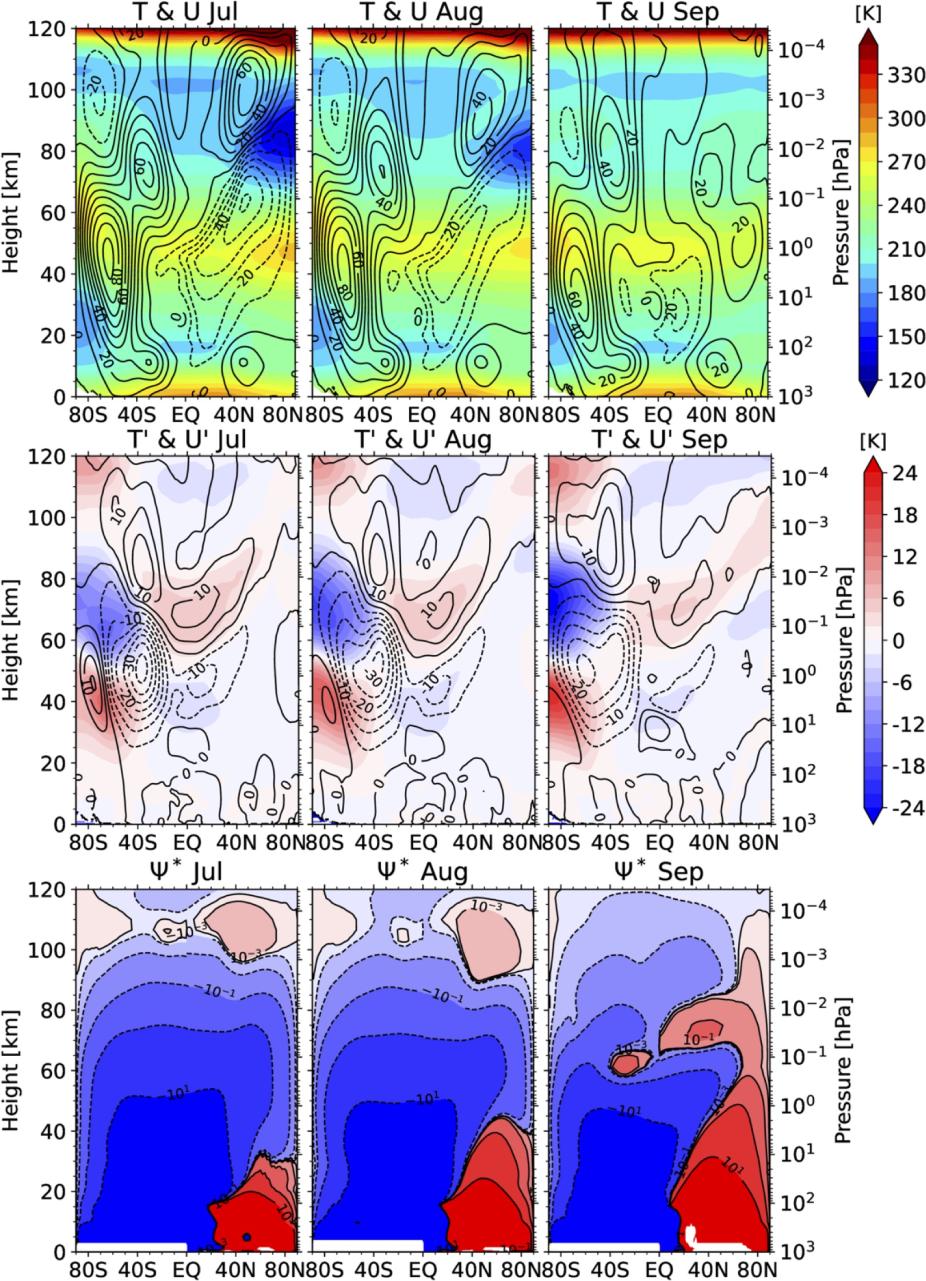
Results showing the interhemisphere coupling simulated by WACCM6 in July, August, and September. Latitude-height sections of (top) temperature (color) and zonal wind (contour), (middle) temperature (color) and zonal wind (contour) anomaly, and (bottom) stream function of the residual mean circulation composites during cold equatorial stratosphere events averaged over Day = 0 to 4. Results for July (left), August (middle), and September (right) are shown.
Journal of Geophysical Research–Atomspheres: This paper describes the coupling between the winter stratosphere in the Southern Hemisphere and the northern upper mesosphere as seen in a long-term whole atmosphere model simulation. Characteristics in the winter hemisphere were common for events in July, August, and September. However, there were several differences in the summer hemisphere. First, the modulation of the zonal wind and gravity wave forcing is opposite between the early season (July and August) and the late season (September) due to the difference in the background atmosphere. Second, an interannual variation is observed in the altitude of the warming in the summer polar region, with warmings occurring either above or below 100 km. The warming that appears in the upper mesosphere below 100 km altitude is similar to that in previous studies. On the other hand, the warming that appears in the lower thermosphere above 100 km is explained by an additional mechanism through the modulation of the circulation in the lower thermosphere, which has an opposite direction to that in the mesosphere. This interannual variation is associated with the phase of the intraseasonal oscillation in the equatorial mesosphere and lower thermosphere.